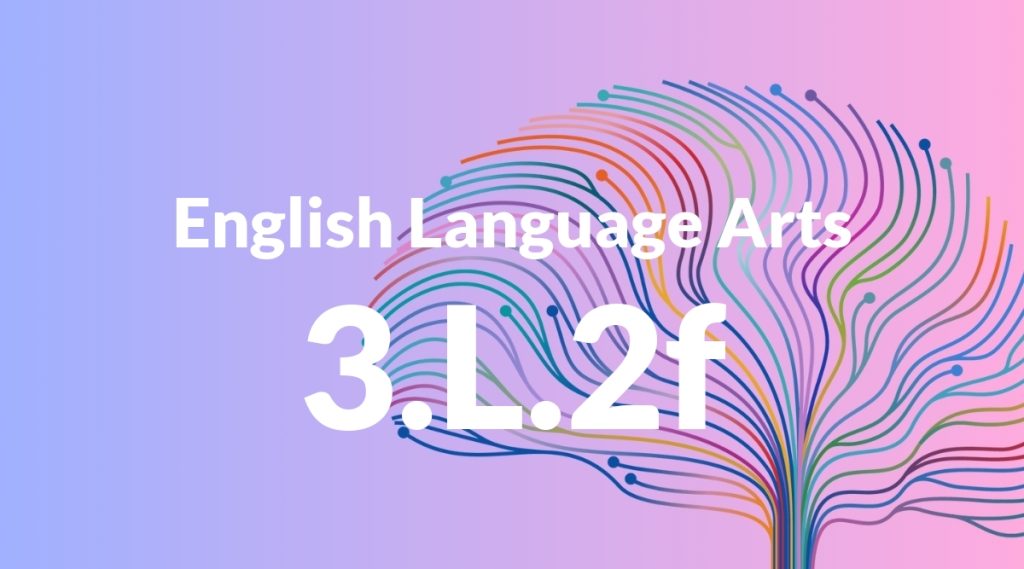Standard: 3.L.2f – Use spelling patterns and generalizations (e.g., word families, position-based spellings, syllable patterns, ending rules, meaningful word parts) in writing words.
Grade level: Grade 3
Subject: English Language Arts
Domain: Language
Teacher Overview
This standard focuses on helping students use spelling patterns and generalizations to write words correctly. It is important because it builds foundational spelling skills that are essential for effective written communication. Understanding these patterns helps students decode unfamiliar words and improves their overall literacy. Students should already understand basic phonics, including common vowel and consonant sounds, and be familiar with simple word families. They should also be able to recognize and write basic words independently.
Students will develop the ability to spell more complex words with increased accuracy and apply spelling rules in their writing. They will also gain confidence in decoding unfamiliar words, which will enhance their overall literacy skills.
Common Misconception 1
A common misconception is that all words follow the same spelling rules. This is incorrect because the English language has many exceptions and irregular spellings that do not fit into a single rule.
Intervention 1
To address this misconception, provide students with examples of words that do not follow common spelling rules. Engage them in activities where they identify and categorize these exceptions, reinforcing that not all words fit neatly into one rule.
Common Misconception 2
Another misconception is that word endings are always consistent. This is incorrect because many words change their spelling when suffixes are added, which can alter the base word in various ways.
Intervention 2
To remediate this misconception, teach students about common suffixes and how they change the base word. Use visual aids and hands-on activities to show these changes, and provide plenty of practice with different words.
Prerequisite Knowledge
Students should have a basic understanding of phonics, including common vowel and consonant sounds, and be familiar with simple word families (e.g., cat, bat, hat). They should also be able to recognize and write basic words independently.
Subsequent Knowledge
After mastering this standard, students will be able to spell more complex words with increased accuracy, understand the rules behind spelling variations, and apply these rules in their writing. They will also gain confidence in their ability to decode unfamiliar words.
Instructional Activities
- Create word family charts and have students fill in words that belong to each family.
- Practice spelling words with different syllable patterns through interactive games.
- Conduct spelling tests that focus on applying ending rules to various words.
- Encourage students to write stories or sentences using words that demonstrate meaningful word parts.




